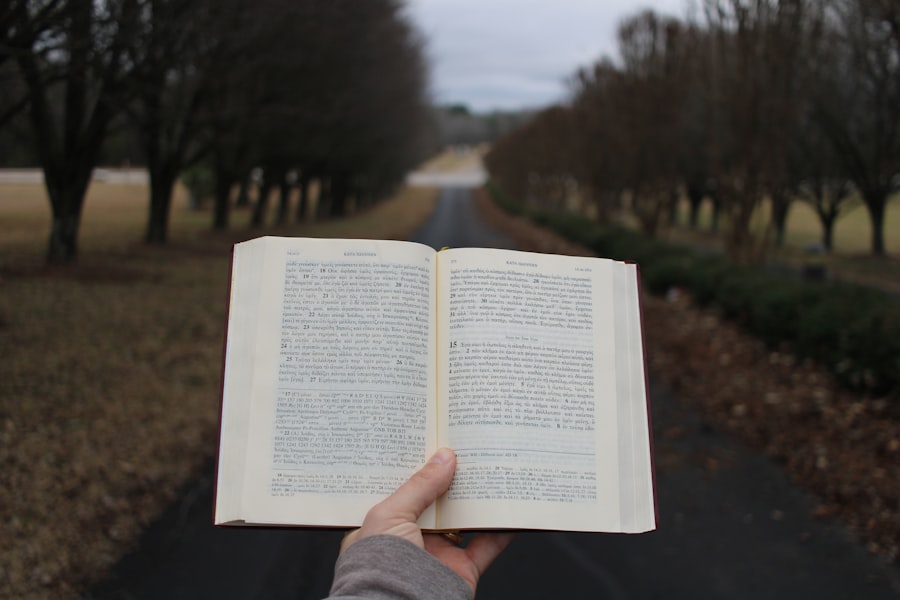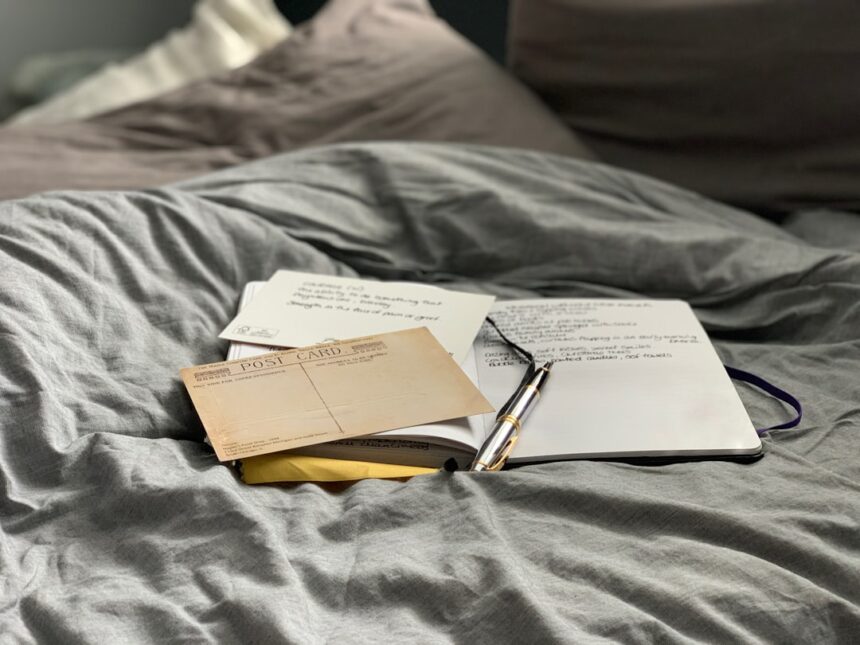Reality journaling is a transformative practice that invites you to explore your thoughts, feelings, and experiences in a structured yet creative way. It serves as a mirror reflecting your inner world, allowing you to gain insights into your life and the patterns that shape it. By engaging in this practice, you can cultivate a deeper understanding of yourself, enhance your emotional intelligence, and foster personal growth.
As you embark on this journey, you will discover that reality journaling is not merely about recording events; it’s about capturing the essence of your experiences and the emotions tied to them. In a world filled with distractions and noise, reality journaling offers a sanctuary for self-reflection. It encourages you to slow down and connect with your thoughts on a profound level.
This practice can be particularly beneficial during times of change or uncertainty, as it provides clarity and perspective. By committing to reality journaling, you are taking an active role in your personal development, allowing yourself the space to process your experiences and emotions in a meaningful way.
Key Takeaways
- Reality journaling is a practice of recording and reflecting on everyday experiences to gain insight and self-awareness.
- Creating a sacred space for journaling can help to set the stage for a meaningful and focused practice.
- Choosing the right tools and materials, such as a comfortable journal and writing utensils, can enhance the journaling experience.
- Prompts and exercises can help to kickstart reality journaling and inspire new perspectives on daily life.
- Establishing a regular practice is key to reaping the benefits of reality journaling and maintaining consistency.
Setting the Stage: Creating a Sacred Space for Journaling
Creating a sacred space for your journaling practice is essential for fostering an environment conducive to reflection and creativity. This space should be comfortable and inviting, allowing you to feel at ease as you delve into your thoughts. Consider choosing a quiet corner of your home where you can minimize distractions.
You might want to add personal touches such as soft lighting, cushions, or even plants to make the space feel more nurturing. The goal is to create an atmosphere that encourages introspection and creativity. In addition to physical comfort, consider the emotional aspects of your journaling space.
You may want to incorporate elements that inspire you, such as artwork, quotes, or objects that hold personal significance. This can help set the tone for your journaling sessions, making them feel special and intentional. By establishing a sacred space, you signal to yourself that this time is dedicated to self-exploration and growth, allowing you to fully engage with the process of reality journaling.
Choosing the Right Tools and Materials

Selecting the right tools and materials for your reality journaling practice can significantly enhance your experience. While a simple notebook and pen can suffice, exploring various options may inspire you further. Consider experimenting with different types of journals—some may prefer lined pages for structured writing, while others might enjoy blank pages for freeform expression.
The choice of pen can also impact your writing experience; find one that feels comfortable in your hand and flows smoothly across the page. Beyond traditional writing tools, think about incorporating other materials that resonate with you. Colored pens, markers, or highlighters can add vibrancy to your entries, while stickers or washi tape can serve as decorative elements that make your journal feel more personalized.
If you’re inclined towards digital journaling, various apps offer features like voice recording or photo integration that can enrich your entries. Ultimately, the tools you choose should align with your personal style and preferences, making the journaling process enjoyable and fulfilling.
Getting Started: Prompts and Exercises for Reality Journaling
| Section | Metrics |
|---|---|
| Introduction | Number of readers |
| Prompts | Number of prompts |
| Exercises | Number of exercises |
| Feedback | Number of comments |
As you begin your reality journaling journey, prompts and exercises can serve as valuable guides to help you navigate your thoughts and feelings. Start with simple prompts that encourage self-reflection, such as “What am I grateful for today?” or “What challenges did I face this week?” These questions can help you focus on specific aspects of your life and encourage deeper exploration of your emotions and experiences. In addition to prompts, consider incorporating exercises that stimulate creativity and self-discovery.
For instance, try writing a letter to your future self or creating a list of goals you wish to achieve. You might also explore stream-of-consciousness writing, where you allow your thoughts to flow freely onto the page without judgment or editing. This exercise can help uncover hidden feelings or insights that may not surface through structured writing alone.
By engaging with these prompts and exercises, you’ll find that reality journaling becomes a dynamic tool for self-exploration.
Establishing a Regular Practice
Establishing a regular journaling practice is crucial for reaping the full benefits of reality journaling. Consistency helps create a habit that allows you to engage with your thoughts and feelings more deeply over time. Consider setting aside specific times during the week dedicated solely to journaling—whether it’s in the morning to set intentions for the day or in the evening to reflect on your experiences.
By making this commitment to yourself, you signal the importance of this practice in your life. To help maintain consistency, consider creating a journaling schedule or setting reminders on your phone. You might also find it helpful to pair journaling with another daily routine, such as enjoying a cup of tea or coffee while writing.
This association can make the practice feel more enjoyable and integrated into your life. Remember that it’s okay if some days are more challenging than others; what matters is showing up for yourself regularly and allowing the process to unfold naturally.
Overcoming Challenges and Blocks

As with any creative practice, challenges and blocks may arise during your reality journaling journey. You might find yourself struggling with writer’s block or feeling overwhelmed by emotions that surface during reflection. Acknowledge these feelings without judgment; they are a natural part of the process.
When faced with writer’s block, consider changing your approach—try writing in a different format or using visual elements like doodles or mind maps to express your thoughts. Another effective strategy for overcoming challenges is to revisit your intentions for journaling. Remind yourself why you started this practice in the first place and what you hope to gain from it.
This reflection can reignite your motivation and help you push through difficult moments. Additionally, don’t hesitate to take breaks when needed; sometimes stepping away from the journal allows for fresh perspectives and renewed energy when you return.
Deepening Your Practice: Advanced Techniques for Reality Journaling
Once you’ve established a foundation in reality journaling, consider exploring advanced techniques that can deepen your practice further. One approach is thematic journaling, where you focus on specific themes or areas of your life over an extended period. For example, you might dedicate a month to exploring relationships or personal growth, allowing for more profound insights as you reflect on these themes consistently.
Another advanced technique involves integrating mindfulness into your journaling practice. Before writing, take a few moments to center yourself through deep breathing or meditation. This practice can help clear your mind and create a sense of presence as you engage with your journal.
Additionally, consider incorporating reflective questions at the end of each entry—questions like “What did I learn from this experience?” or “How can I apply these insights moving forward?” These reflections can enhance self-awareness and promote ongoing growth.
Using Visualization and Mindfulness in Reality Journaling
Visualization and mindfulness are powerful tools that can enrich your reality journaling experience. By incorporating visualization techniques into your practice, you can create vivid mental images that enhance your reflections. For instance, before writing about a particular experience, take a moment to visualize it in detail—consider the sights, sounds, and emotions associated with it.
This technique can help evoke deeper feelings and insights as you translate those images onto the page. Mindfulness plays a crucial role in grounding your journaling practice as well. As you write, focus on being present in the moment—notice how the pen feels against the paper or how your breath flows in rhythm with your thoughts.
By combining visualization and mindfulness with reality journaling, you create a holistic approach that nurtures both creativity and self-awareness.
Incorporating Art and Creativity into Your Journaling Practice
Artistic expression can be a wonderful complement to reality journaling, allowing you to explore emotions in ways that words alone may not capture. Consider incorporating drawing, painting, or collage into your journal entries as a means of expressing complex feelings or experiences visually. You don’t need to be an artist; simply allow yourself the freedom to create without judgment or expectation.
You might also explore mixed media techniques by combining writing with visual elements like photographs or magazine clippings that resonate with your experiences. This approach not only adds depth to your journal but also makes it a more engaging and dynamic space for self-expression. Embracing creativity in this way can unlock new insights and perspectives while making the journaling process even more enjoyable.
Sharing Your Journaling Journey with Others
Sharing your journaling journey with others can be both empowering and enriching. Whether through workshops, online communities, or close friends, discussing your experiences can provide valuable support and encouragement as you navigate this practice. Sharing insights from your reality journaling can foster connections with others who may be on similar paths of self-discovery.
However, it’s essential to approach sharing with care—consider what aspects of your journey feel comfortable to disclose and what remains private for now. You might choose to share specific entries or themes rather than revealing everything at once. Engaging in discussions about journaling techniques or prompts can also inspire new ideas while creating a sense of community around this transformative practice.
Reflecting and Integrating Your Reality Journaling Experience
As you continue on your reality journaling journey, take time to reflect on what you’ve learned about yourself through this practice. Consider revisiting past entries periodically; this reflection allows you to track your growth over time and recognize patterns in your thoughts and emotions. You may find it enlightening to see how certain challenges have evolved or how you’ve developed new perspectives on recurring themes.
Integrating insights gained from reality journaling into your daily life is equally important. Think about how you can apply what you’ve learned to enhance various aspects of your life—whether it’s improving relationships, setting new goals, or cultivating healthier habits. By actively integrating these insights into your life, you reinforce the value of reality journaling as a tool for personal growth and transformation.
In conclusion, reality journaling is a powerful practice that invites self-exploration and emotional awareness through structured reflection and creativity. By creating a sacred space for journaling, choosing the right tools, establishing regular practices, overcoming challenges, deepening techniques, incorporating mindfulness and art, sharing experiences with others, and reflecting on insights gained along the way, you embark on a transformative journey toward greater self-understanding and personal growth.
Reality journaling is a powerful tool for self-reflection and personal growth, allowing individuals to document their thoughts and experiences in a structured manner. For those interested in exploring this practice further, an insightful article on the topic can be found on the Unplugged Psych website. This article delves into the benefits of reality journaling and offers practical tips on how to get started. You can read more about it by visiting the Unplugged Psych homepage, where you’ll find a wealth of resources dedicated to mental health and personal development.
WATCH THIS! 🧠 The 11 Manipulation Tactics That Trap Smart People
FAQs
What is reality journaling?
Reality journaling is a practice of documenting and reflecting on your daily experiences, thoughts, and emotions in a journal. It involves writing about your observations, interactions, and feelings as a way to gain insight and self-awareness.
How do you start reality journaling?
To start reality journaling, you can begin by setting aside time each day to write in a journal. You can choose to focus on specific aspects of your day, such as your interactions with others, your emotions, or your surroundings. It’s important to be honest and reflective in your writing.
What are the benefits of reality journaling?
Reality journaling can help you gain a deeper understanding of yourself, your relationships, and your environment. It can also serve as a tool for self-reflection, stress relief, and personal growth. Additionally, reality journaling can help improve your writing skills and creativity.
How can reality journaling be incorporated into daily life?
You can incorporate reality journaling into your daily life by making it a regular habit, such as writing in your journal at the end of each day or during specific moments of reflection. It can also be helpful to carry a journal with you to capture thoughts and experiences as they occur.
Are there different approaches to reality journaling?
Yes, there are different approaches to reality journaling, and individuals may choose to focus on different aspects of their experiences. Some may focus on gratitude and positive experiences, while others may explore challenging emotions and personal growth. The approach to reality journaling can be tailored to individual preferences and goals.




